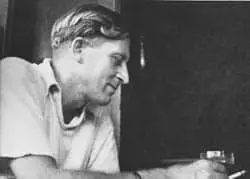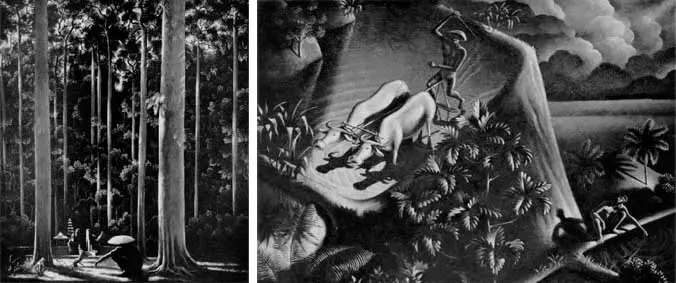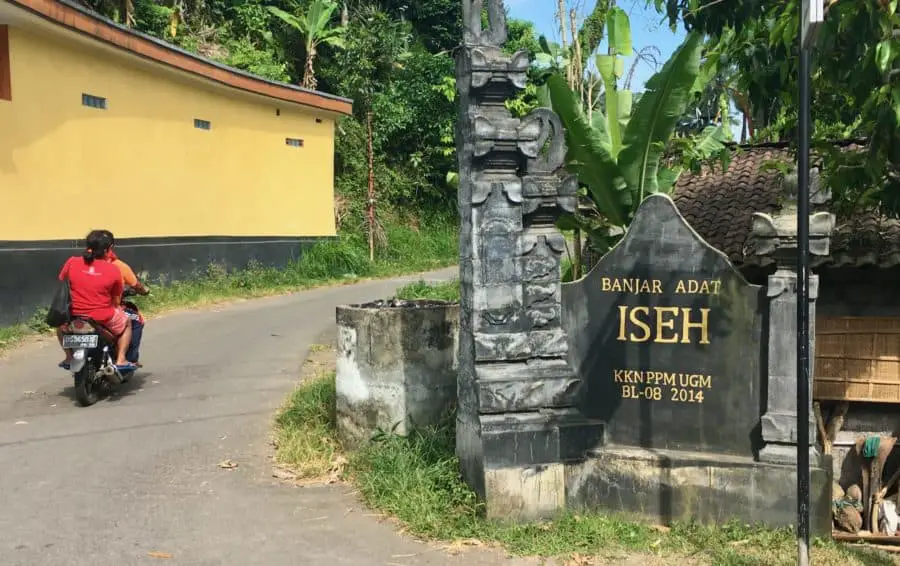Before Walter Spies settled in Bali
1. Born in Moscow, Russia in 1895, where his father was the honorary consul for Germany and a citizen of the Russian empire. Here he studied music, painting, zoology, dancing and botany.
 2. Was imprisoned and send to the cultural melting pot of Sterlitamak city near the Ural Mountains when the Russian Revolution took place. Here he escaped and it took him 12 months to find his way back to his family in Dresden in 1919.
2. Was imprisoned and send to the cultural melting pot of Sterlitamak city near the Ural Mountains when the Russian Revolution took place. Here he escaped and it took him 12 months to find his way back to his family in Dresden in 1919.
3. He went to Berlin to work with the film director Friedrich Murnau (the great master of silent movies) Together with him traveled around Europe where they worked on different films in 1922.
4. He was greatly influenced by painters such as Klee, Rousseau and Chagall. He had a big solo exhibition in Amsterdam and The Hague where he sold various paintings. Proceeds of the paintings were send to Dutch East Indies and in 1923 he worked as a seaman on one of the ships bound for Java island.
Here he worked briefly as a pianist for the Chinese cinema in Bandung before he became the Director for the Sultan’s Western Orchestra in Yogjakarta in 1924. He was the first European and musician to live in the Sultan’s palace. He stayed here for 12 months and in the meanwhile took 2 days of holiday on Bali island. During his 12 months period he painted ‘Shrimp Fisherman at Lake Klakah’ 1924.
Influences of Walter Spies in Bali
5. He was invited to Bali by the King of Ubud who met him at the Sultan’s palace in Yogjakarta. Lured by the mystique of Balinese culture he moved there in 1927. Here the royal family gave him a piece of land where the two rivers meet at Campuhan.
He stayed for another 13 years. Works of his include ‘The seated man’ in 1929, a small drawing of the carver Ida Bagus Ketut Gelodog in 1929, and the magnificent ‘Farmer Ploughing’ his rice field in 1931.

Pita Miha
6. Set up of Pita Maha together with the royal King Cokordo of Ubud and the Dutch painter Rudolf Bonnet. Their aim was to stimulate local Balinese artists to use Western painting techniques. From there on they succeeded in exporting Balinese art. He worked as the curator of Bali’s first museum in Denpasar. Weekly meetings took place at his house on the Campuhan ridge in Ubud. At these meetings expatriates such as the author/artist Covvarubias and scholars came together. Together with the Balinese he created the famous ‘kecak’ dance.
7. Left Campuhan for the much quieter Iseh on the slopes of Gunung Agung to stay in what he called ‘a mountain hut’ for a year. Here he painted the famous ‘Iseh im Morgenlicht’ in 1938. Settled again in Ubud when he came back. This mountain hut became Theo Meier’s residence. Now it is a mountain retreat where celebrities such as Jean Paul Getty Jr, Mick Jagger, David Bowie, Ethnologist Urs Ramseyer and more have stayed.
Imprisonment
8. He was arrested by the Dutch for being homosexual in 1938 and was placed under house arrest until August 1939. During his imprisonment he made another masterpiece called ‘The landscape and her children’ (62 x91 cm) which sold at Christies for $1,143,383 in 2002.

9. In May 1942 he was re-arrested by the Dutch colonial power when World War II broke out and the Germans invaded Holland. Was placed on a prisoner boat, the Van Imhoff, bound for India together with other Germans businessmen and seafarers who worked in the Dutch East Indies.
The next morning on the 17th January 1942 the boat got hit by a Japanese plane bomb and the Captain Hoeksema and his staff evacuated. The sergeant of the guard released all prisoners. Unfortunately the Captain refused to let them tag along in rescue boats. Walter Spies drowned on the Van Imhoff when he was just 47 years old.
Geff Green has listed Walter Spies’ paintings in chronological order.
Walter Spies Today
10. His biggest legacy is portraying Bali as the island paradise through his paintings, music and films such as ‘The island of demons’ together with Baron Victor von Plessen.
There’s just one of his paintings to be found on Bali today called ‘Calonarang’ 1930. It is part of Agung Rai’s private collection at the Agung Rai Museum in Pengosekan, just south of Ubud. But many works of his ‘students’ can still be admired at the Neka Museum and at the Puri Lukisan Museum in Ubud.

